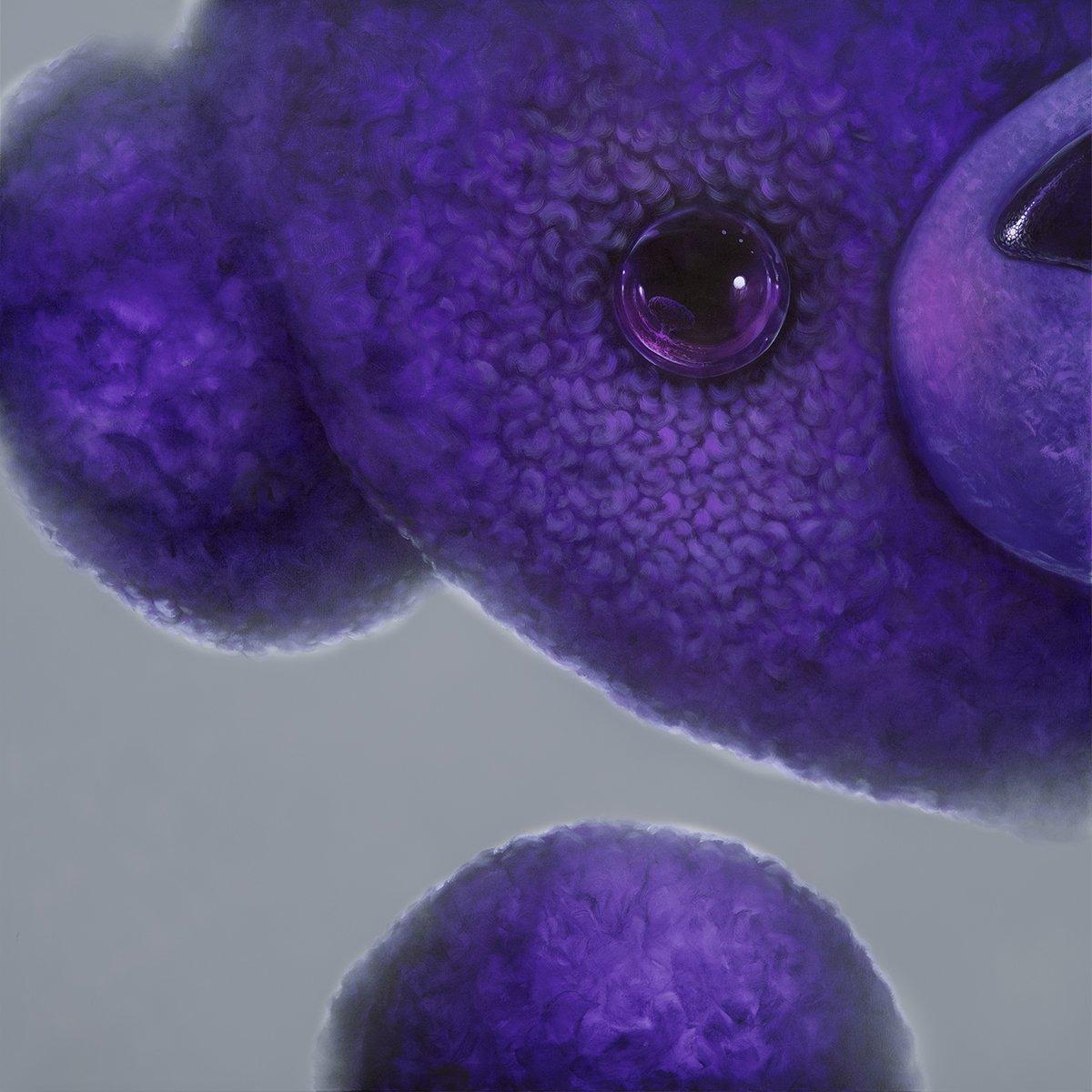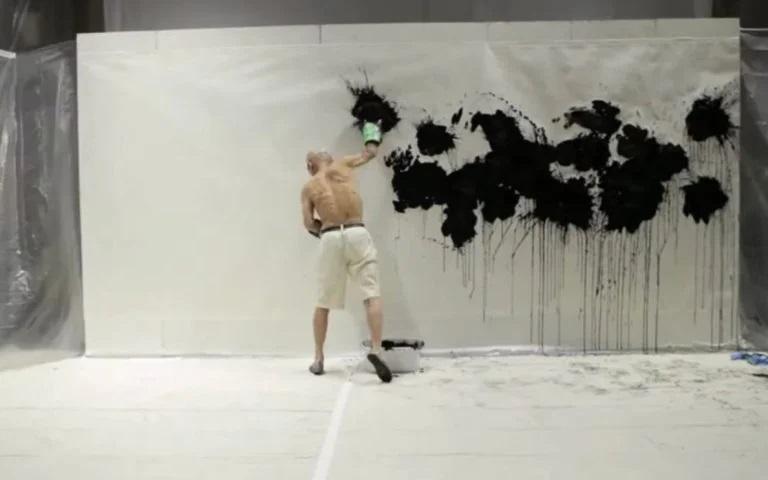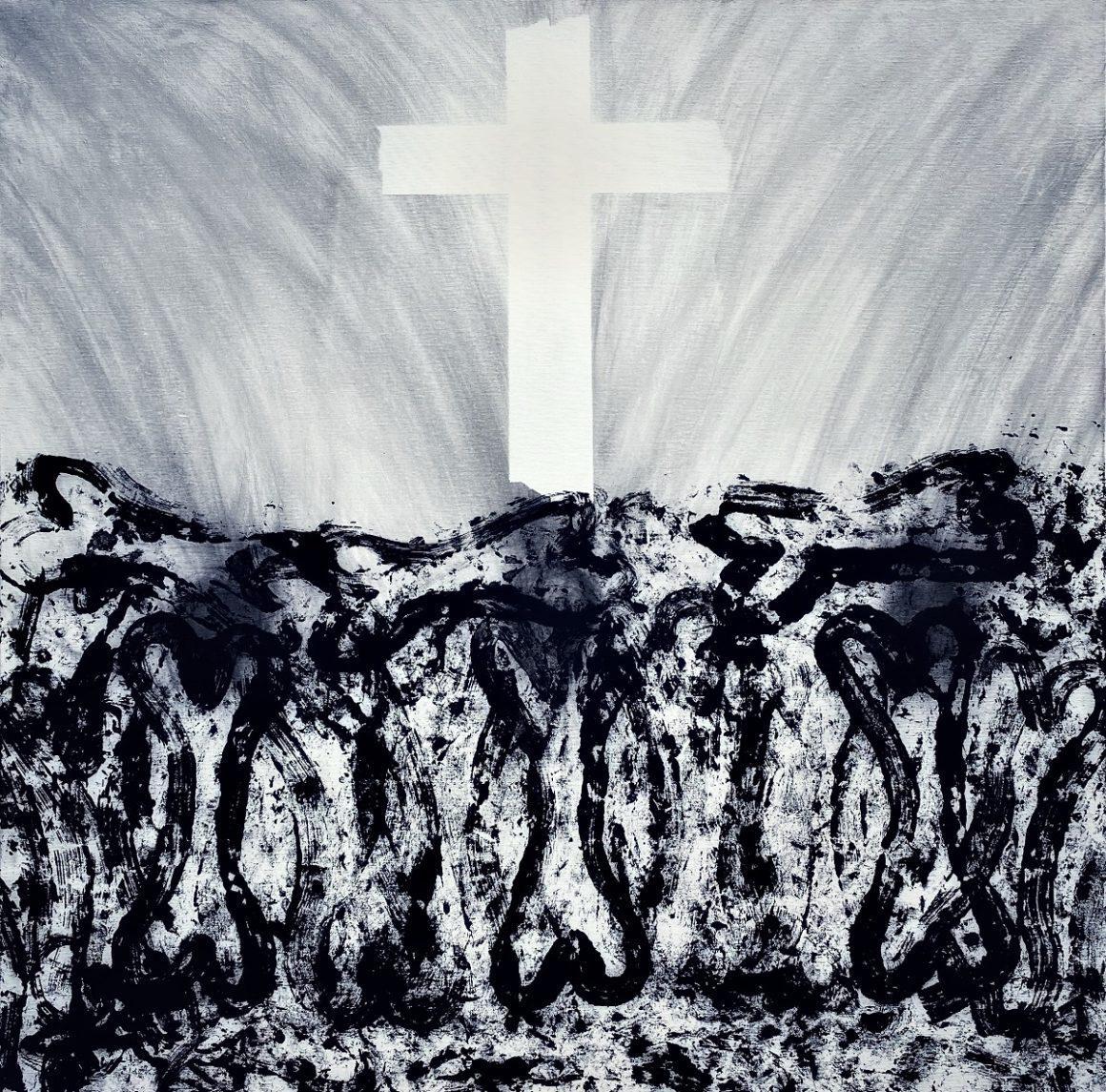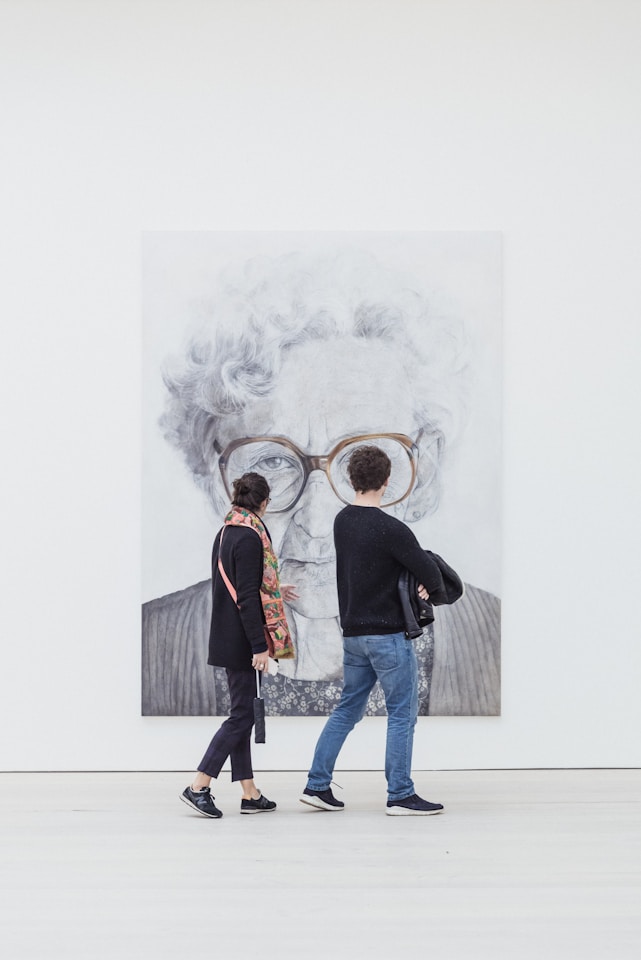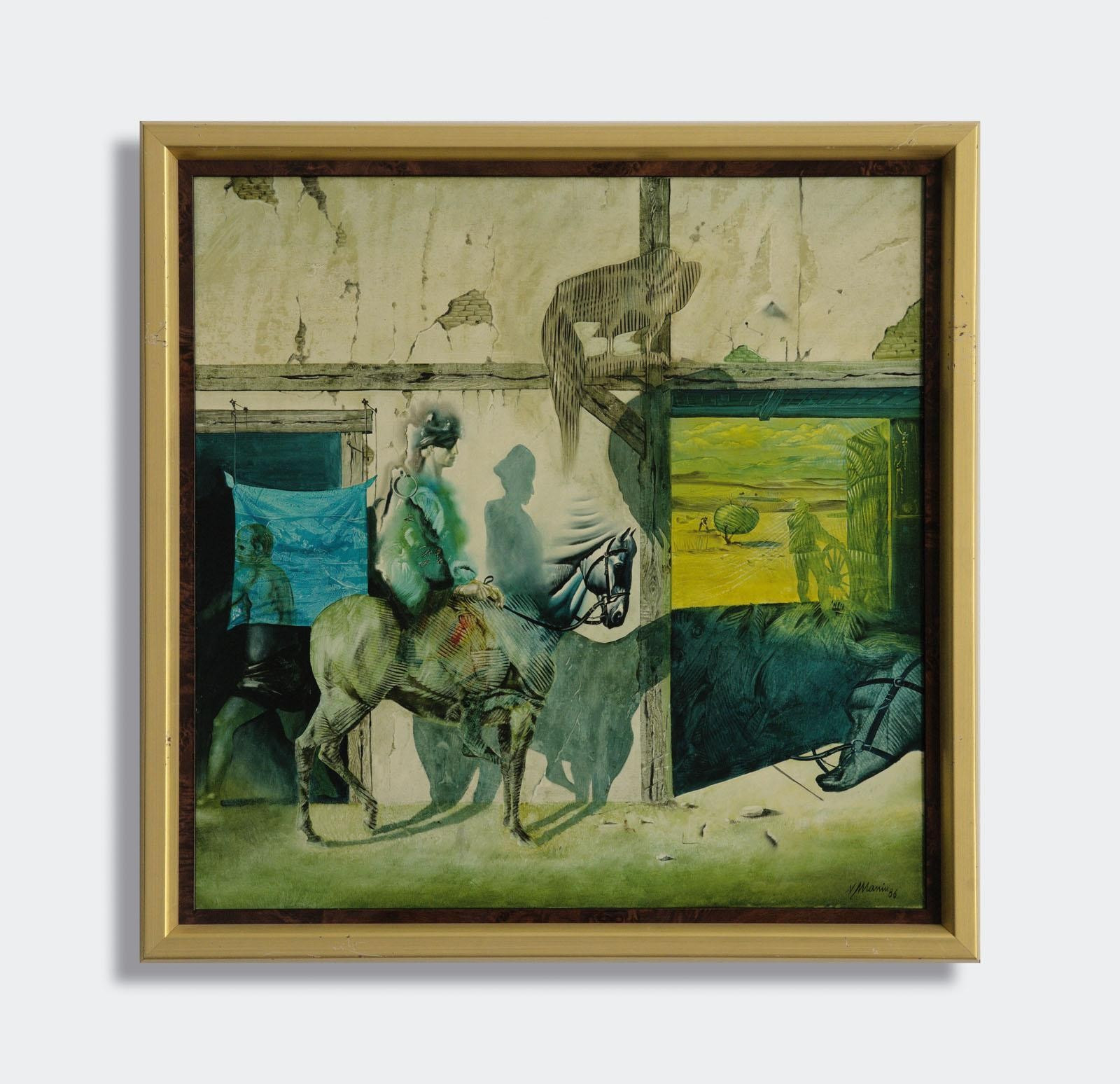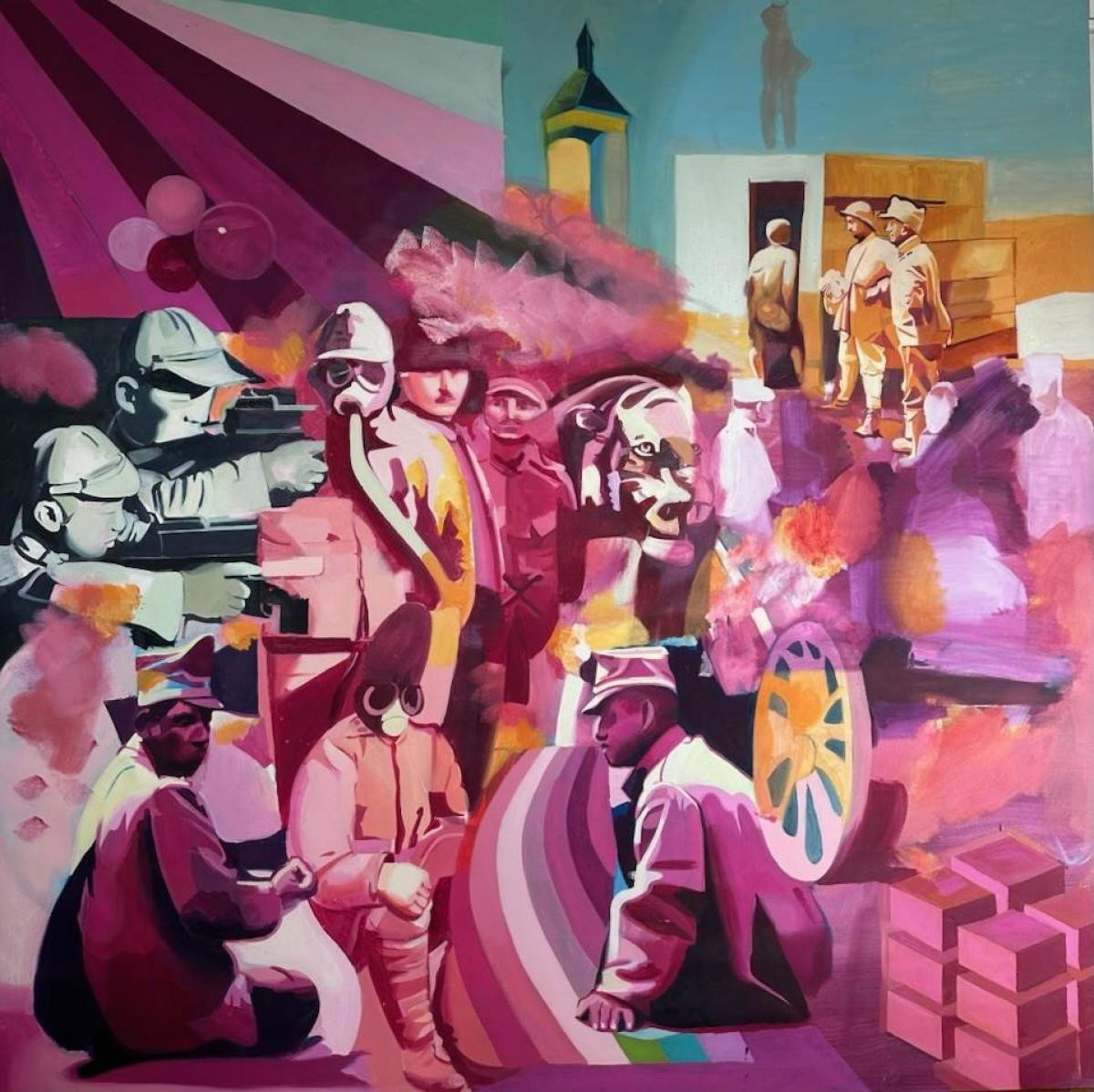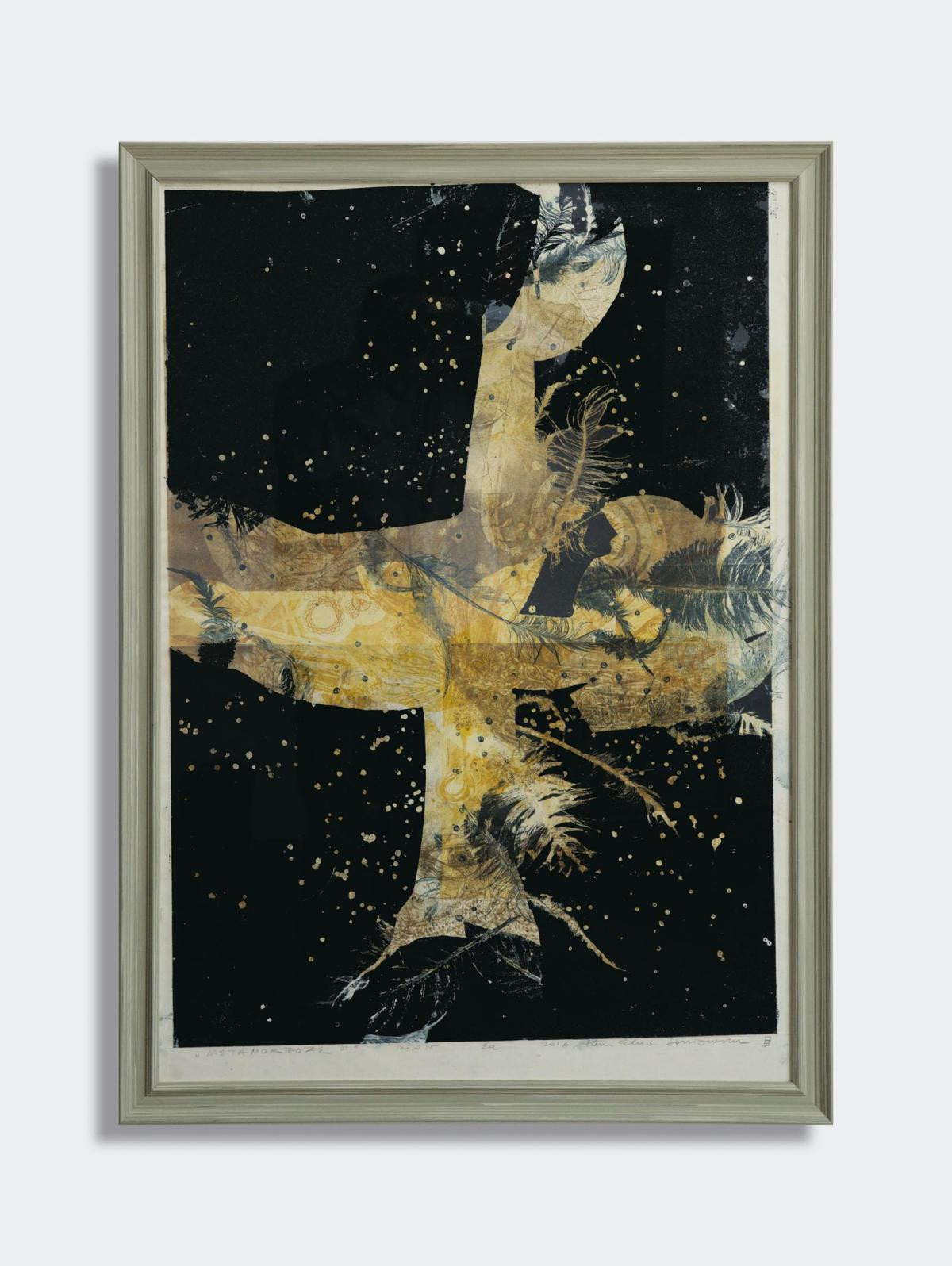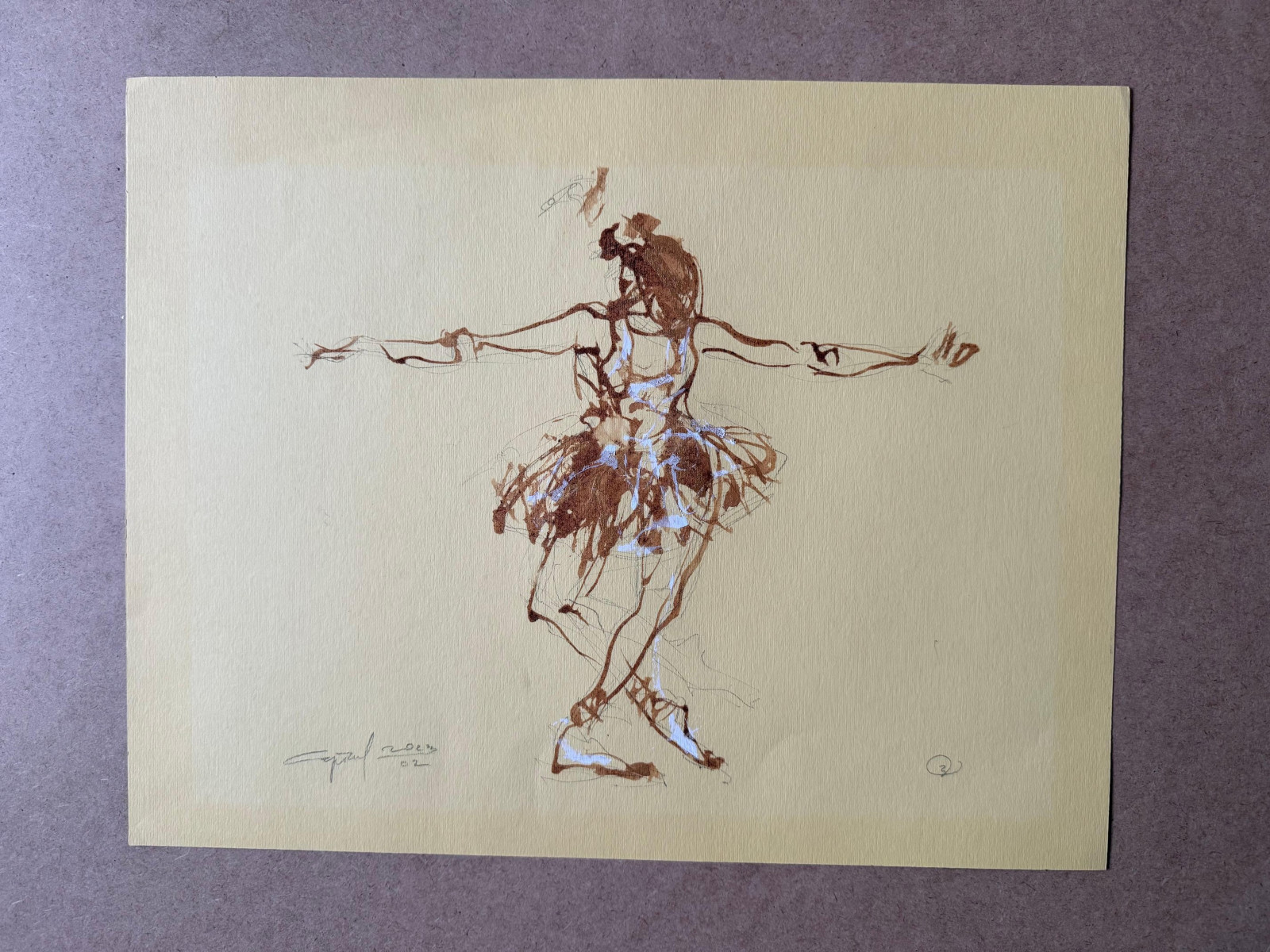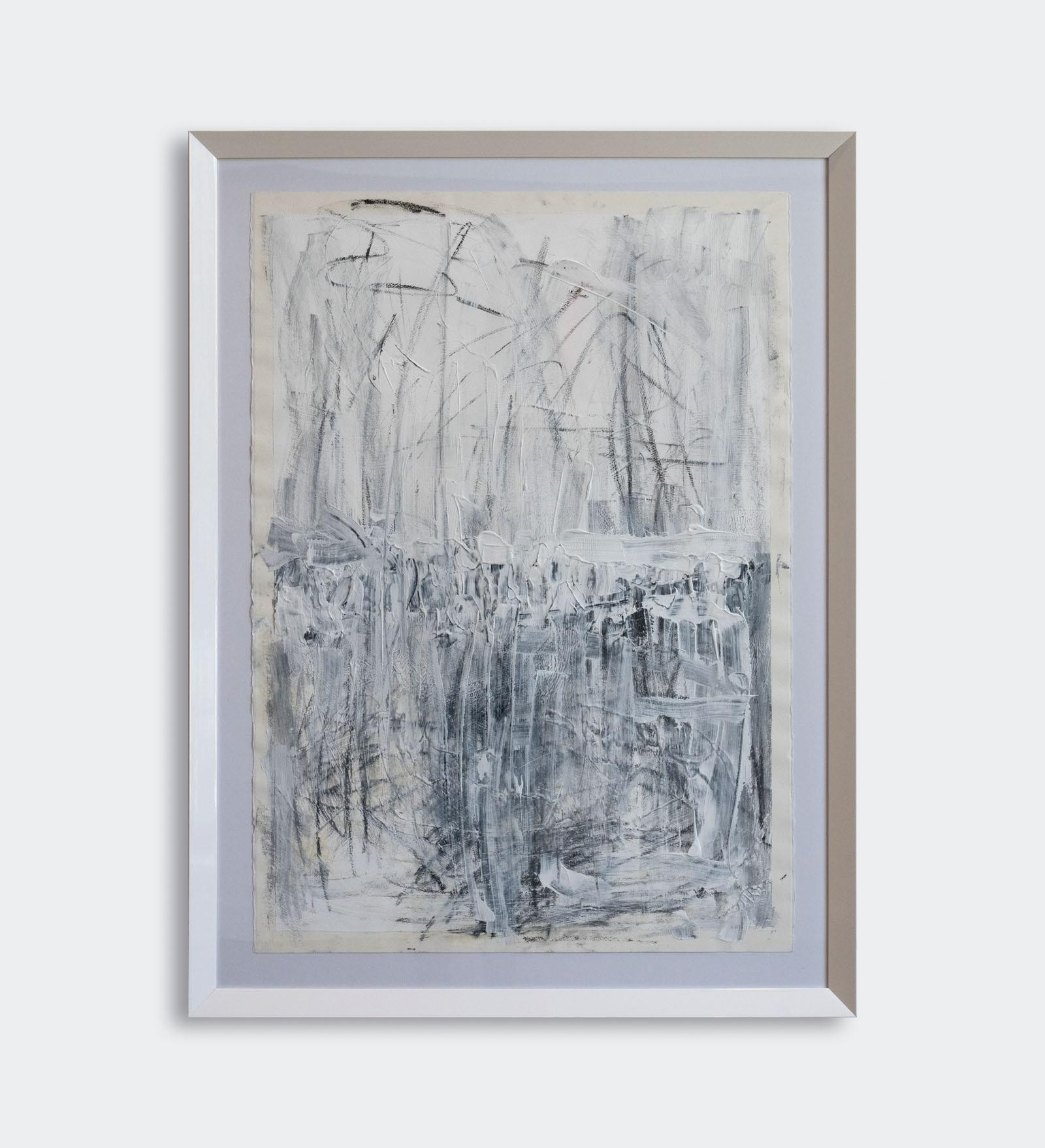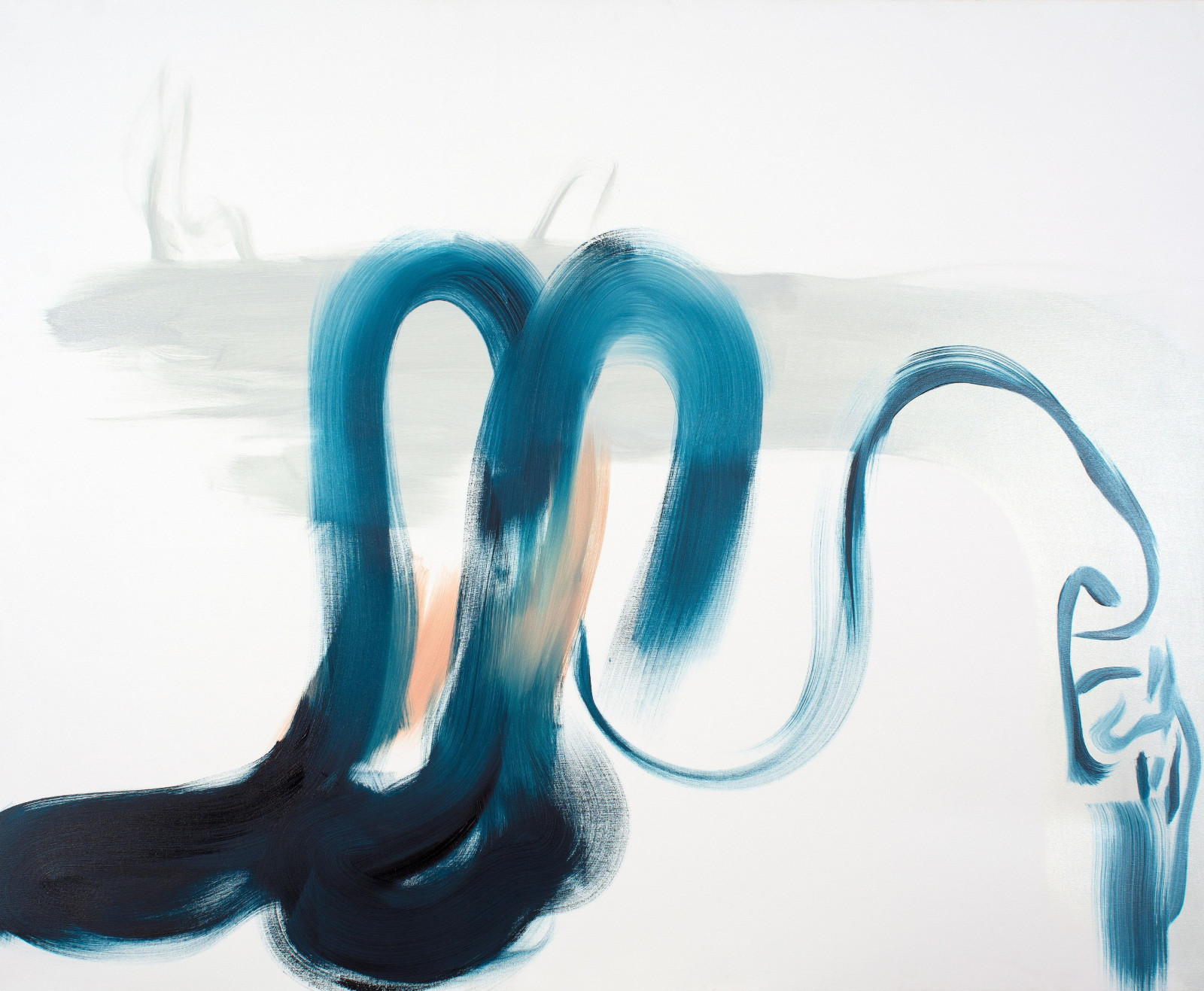This work appears to be a painting of a purple teddy bear, done in a hyperrealistic style. The details of the fur texture are very meticulously worked, suggesting a depth and softness that very well imitates the real texture of a textile material. The dominant color is purple, used in a wide range of shades to create shadows and highlights, giving volume and realism to the image. The bear's eye, which is prominent, reflects a subtle light, adding a touch of expressiveness and realism.
The image has an unusual compositional angle, focusing on part of the bear's head and ears, which creates an effect of intimacy and closeness.
The detailed image of the purple bear's eye in this painting carries a deep and disturbing symbolism. At first glance, the eye seems to reflect light in a realistic way, suggesting the purity or innocence of childhood, as embodied by a simple teddy bear. However, the fact that this eye conceals an atomic bomb brings an unexpected and shocking dimension.
This juxtaposition between the image of an innocent object and the symbol of a catastrophic event such as the atomic tests or the bombs dropped on Hiroshima and Nagasaki emphasizes the fragility and vulnerability of humanity. The teddy bear, a traditional symbol of childhood, becomes a silent witness to unimaginable atrocities and destruction. Through its eye, it reflects both the world of innocent childhood and the devastating forces that have changed the course of history.
The reflection of an atomic bomb in the eye of this purple teddy bear can represent a parallel between the destruction of innocence and the loss of humanity in the face of technology and war. The detailed texture and vibrant colors of the fur contrast with the violence and destruction symbolized by the atomic bomb, creating a sense of dissonance – a visual reminder of how even the most innocuous things can hide deep shadows of history.
Thus, this work becomes not just a hyperrealistic portrait of a teddy bear, but also a subtle critique of how society handles violence, trauma, and historical memory.
Sincerely,
Alecs Pavot

